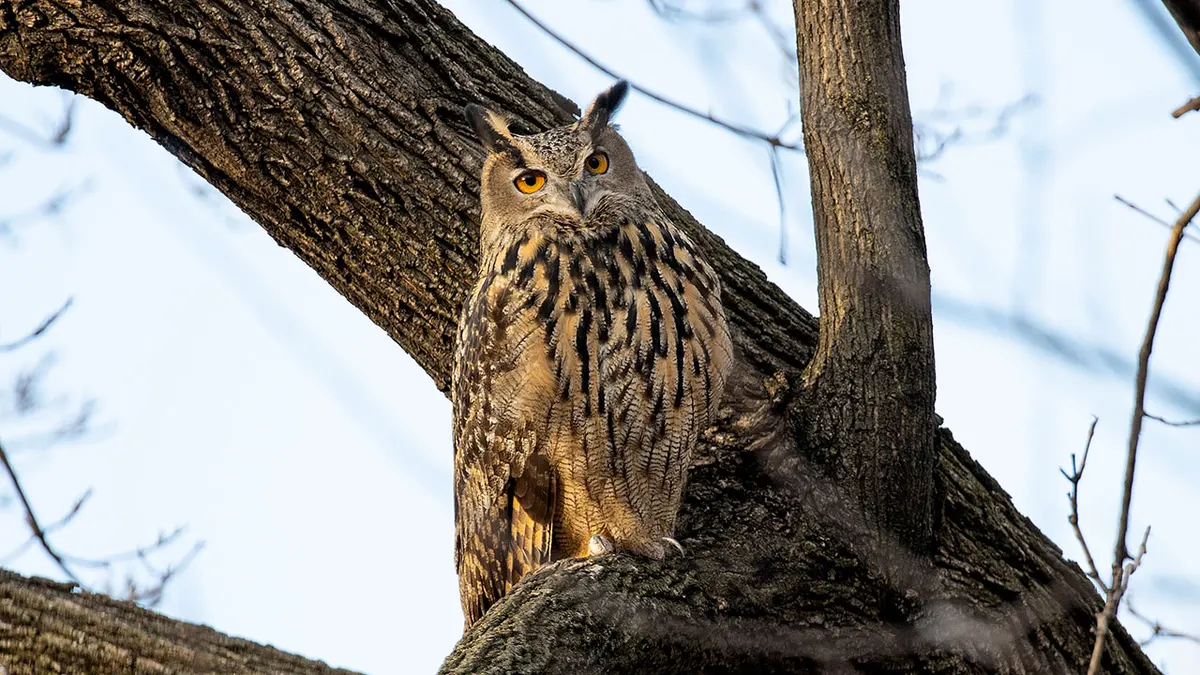New York City’s beloved celebrity owl, Flaco, met a tragic demise last month, as revealed by officials at the Bronx Zoo on Monday. The Eurasian eagle-owl, renowned for his captivating presence in the urban landscape, was found lifeless in a Manhattan courtyard on Feb. 23. Initial autopsy results indicated trauma as the cause of death, but further investigations uncovered a grave underlying health condition that may have contributed to the fatal collision.

Flaco Suffered Severe Case of Pigeon Virus
According to zoo officials, Flaco suffered from a severe case of pigeon herpesvirus, which inflicted extensive damage to vital organs such as the brain, liver, and spleen. Additionally, blood tests revealed high levels of rat poison in Flaco’s system, posing a significant threat to his well-being. These medical afflictions, coupled with the traumatic injury from the collision, ultimately led to Flaco’s untimely demise.
Urban Perils Faced by Flaco
Flaco’s journey into the urban wilderness began over a year ago when an unknown perpetrator vandalized his enclosure at the Central Park Zoo, granting him unexpected freedom. Initially roaming within the confines of Central Park, Flaco soon ventured into the bustling Manhattan skyline, where he endeared himself to New Yorkers with his adept hunting skills, particularly targeting the city’s rat population.
However, Flaco’s newfound freedom also exposed him to a myriad of dangers inherent in the cityscape. Concerns mounted among experts about his vulnerability to consuming poisoned rats, a common occurrence in urban environments. As Flaco’s nightly hooting ceased in the days leading up to his demise, apprehensions grew regarding his well-being, prompting speculation among bird enthusiasts and the broader community.
Reflections and Accountability
In the wake of Flaco’s tragic passing, David Barrett, a prominent bird enthusiast who chronicled the owl’s adventures on social media, expressed a mix of sorrow and closure. While Flaco’s demise serves as a poignant reminder of the hazards faced by wild birds, it also provides a deeper understanding of the circumstances surrounding his untimely death.
Zoo officials underscored the devastating impact of the vandal’s actions, emphasizing the role of human interference in Flaco’s fate. Despite ongoing efforts to identify the perpetrator responsible for tampering with Flaco’s enclosure, the crime remains unsolved. As the community mourns the loss of Flaco, calls for accountability and vigilance in safeguarding wildlife in urban environments resonate strongly.

Flaco’s legacy as an emblematic figure in New York City’s wildlife landscape endures, serving as a poignant reminder of the delicate balance between human activity and the natural world. Through continued awareness and conservation efforts, Flaco’s memory will be honored, ensuring a safer environment for wildlife inhabiting urban settings.
